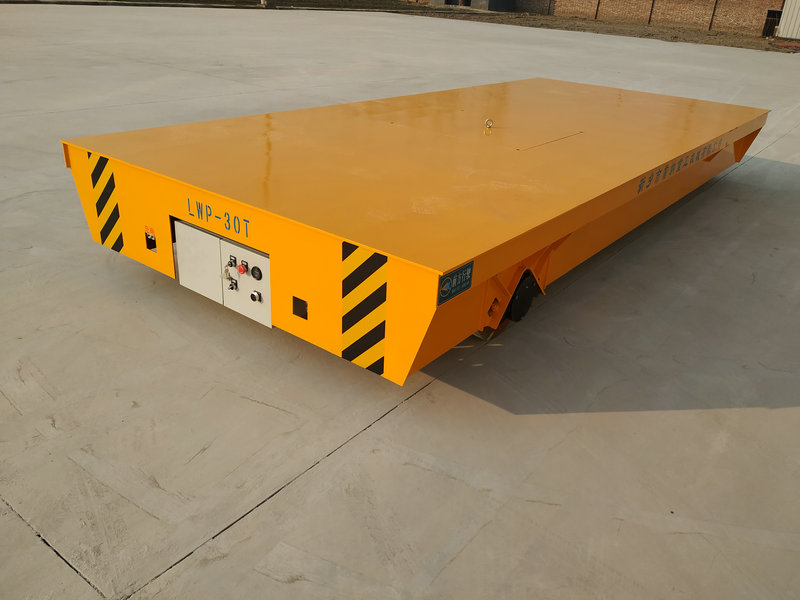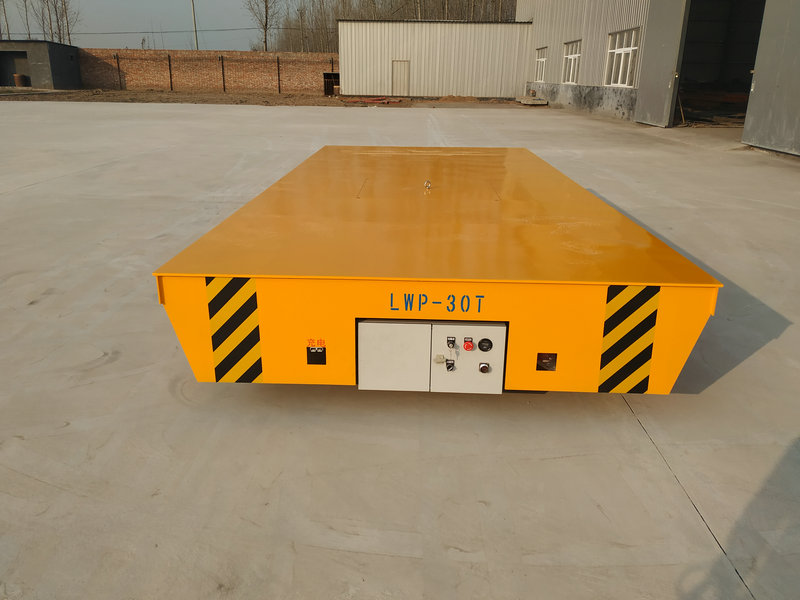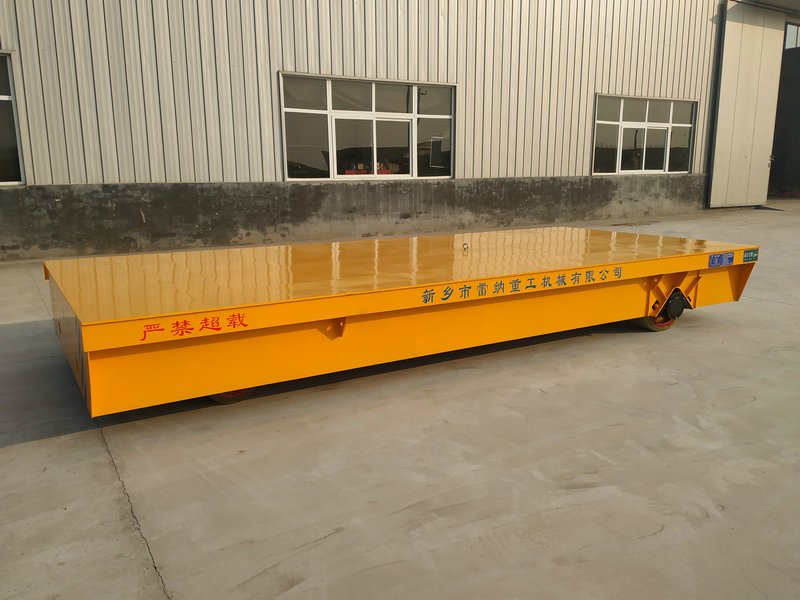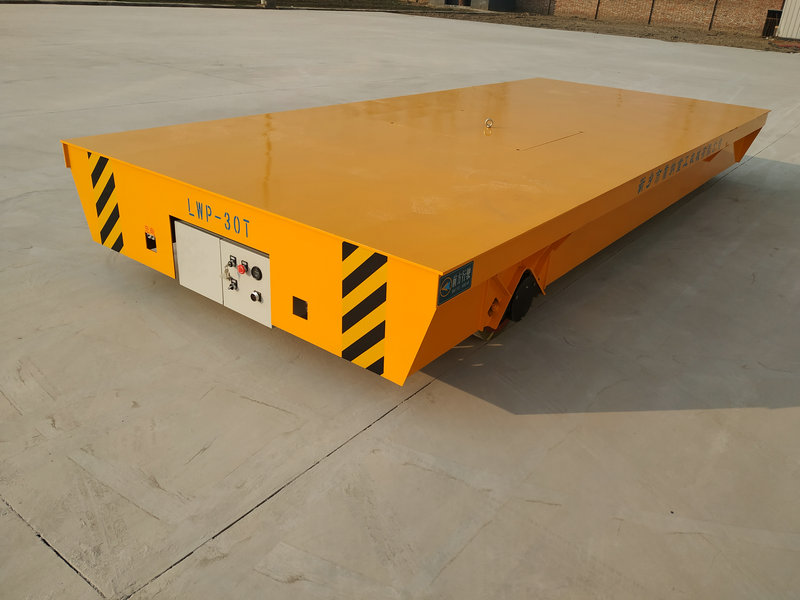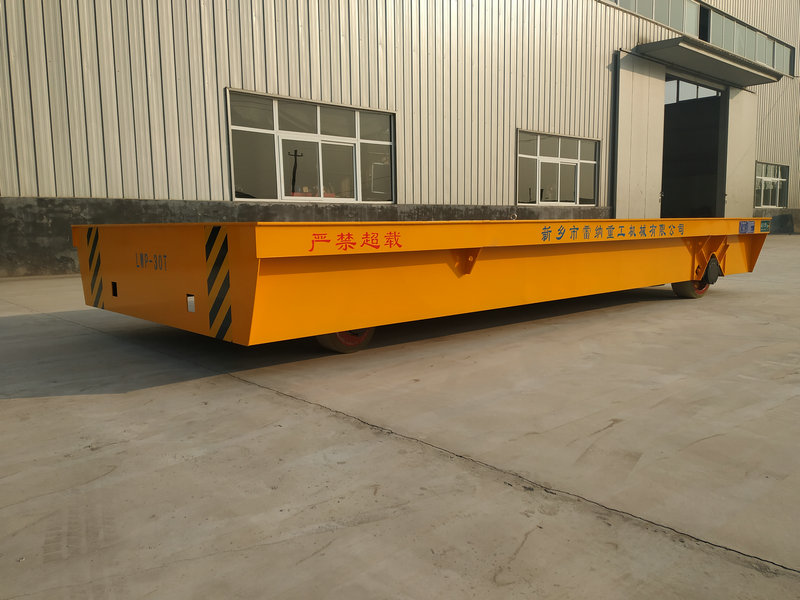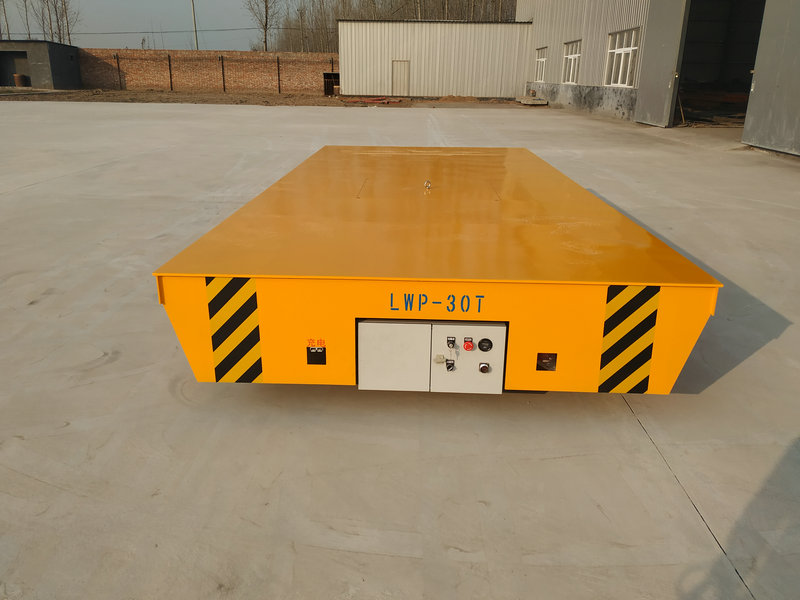
1. Advantages of trackless electric flat cars
High flexibility: Trackless electric flat cars are not restricted by tracks, can travel freely on relatively flat ground, and can easily change their routes, which makes them perform well in workshops, warehouses and other places with complex layouts and irregular transportation routes. For example, in some small manufacturing companies with diverse product types and frequently changing processing equipment layouts, trackless electric flat cars can quickly transport materials to different equipment according to temporary adjustments to the production process.
Strong site adaptability: It has a certain adaptability to ground conditions. Even if there are some small obstacles or the ground is not very flat, it can basically operate as long as it does not affect the passage of vehicles. There is no need to lay and maintain the track like a track electric flat car, which saves the cost and space of track laying.
Easy installation: There is no need to lay special tracks, which greatly reduces the initial installation project and time. In some scenarios where temporary use or rapid commissioning is required, trackless electric flat cars can be put into work faster and improve transportation efficiency.
2. Disadvantages of Trackless Electric Flat Cars
Low positioning accuracy: Due to the lack of track guidance, the accuracy of parking and cargo loading and unloading is not as good as that of rail electric flat cars. In some occasions where the accuracy of material placement is required, such as the docking of automated production lines, trackless electric flat cars may require additional positioning auxiliary equipment to improve accuracy.
Relatively weak carrying capacity: Under the same specifications, the carrying capacity of trackless electric flat cars is generally lower than that of rail electric flat cars. This is because its structure and power distribution method determine that when carrying too heavy goods, driving instability may occur.
Speed and efficiency are limited: Trackless electric flat cars need to consider more environmental factors during driving, such as avoiding obstacles, so their running speed is usually slower than that of rail electric flat cars. In long-term, large-scale, fixed-route transportation tasks, the efficiency will be lower than that of rail electric flat cars.
